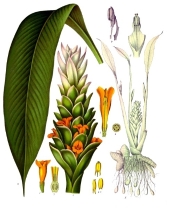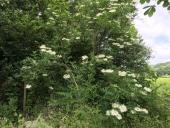
 7
7




“Peace is not absence of conflict, it is the ability to handle conflict by peaceful means.” —Ronald Reagan
Located in Western West Virginia



 1
1




Invasive plants are Earth's way of insisting we notice her medicines. Stephen Herrod Buhner
Everyone learns what works by learning what doesn't work. Stephen Herrod Buhner
 2
2




Check out Redhawk's soil series: https://permies.com/wiki/redhawk-soil
 3
3




“Peace is not absence of conflict, it is the ability to handle conflict by peaceful means.” —Ronald Reagan
Located in Western West Virginia



 2
2




Check out Redhawk's soil series: https://permies.com/wiki/redhawk-soil
 1
1








Check out Redhawk's soil series: https://permies.com/wiki/redhawk-soil
 5
5




growing food and medicine, keeping chickens, heating with wood, learning the land
https://mywildwisconsin.org
 5
5




 1
1




Check out Redhawk's soil series: https://permies.com/wiki/redhawk-soil
 1
1




“Peace is not absence of conflict, it is the ability to handle conflict by peaceful means.” —Ronald Reagan
Located in Western West Virginia



 1
1




Check out Redhawk's soil series: https://permies.com/wiki/redhawk-soil
 4
4




Love is the only resource that grows the more you use it.
David Brower




Check out Redhawk's soil series: https://permies.com/wiki/redhawk-soil




Check out Redhawk's soil series: https://permies.com/wiki/redhawk-soil
 2
2




Check out Redhawk's soil series: https://permies.com/wiki/redhawk-soil
 3
3




(Reminder to myself) God didn't say, "well said, well planned, and well thought out." He said, "well done."
Nikki's Wishlist




shauna carr wrote:
creosote (Larrea tridentata) - Not the same thing as creosote tar. good anti-bacterial and anti-fungal. Great salve from this that I use on wounds to help prevent infection. Being studied for uses that might help against skin cancer, even (https://www.ncbi.nlm.nih.gov/pmc/articles/PMC3138708/ ).
“Peace is not absence of conflict, it is the ability to handle conflict by peaceful means.” —Ronald Reagan
Located in Western West Virginia




|
a wee bit from the empire
The new kickstarter is now live!
https://www.kickstarter.com/projects/paulwheaton/garden-cards
|









